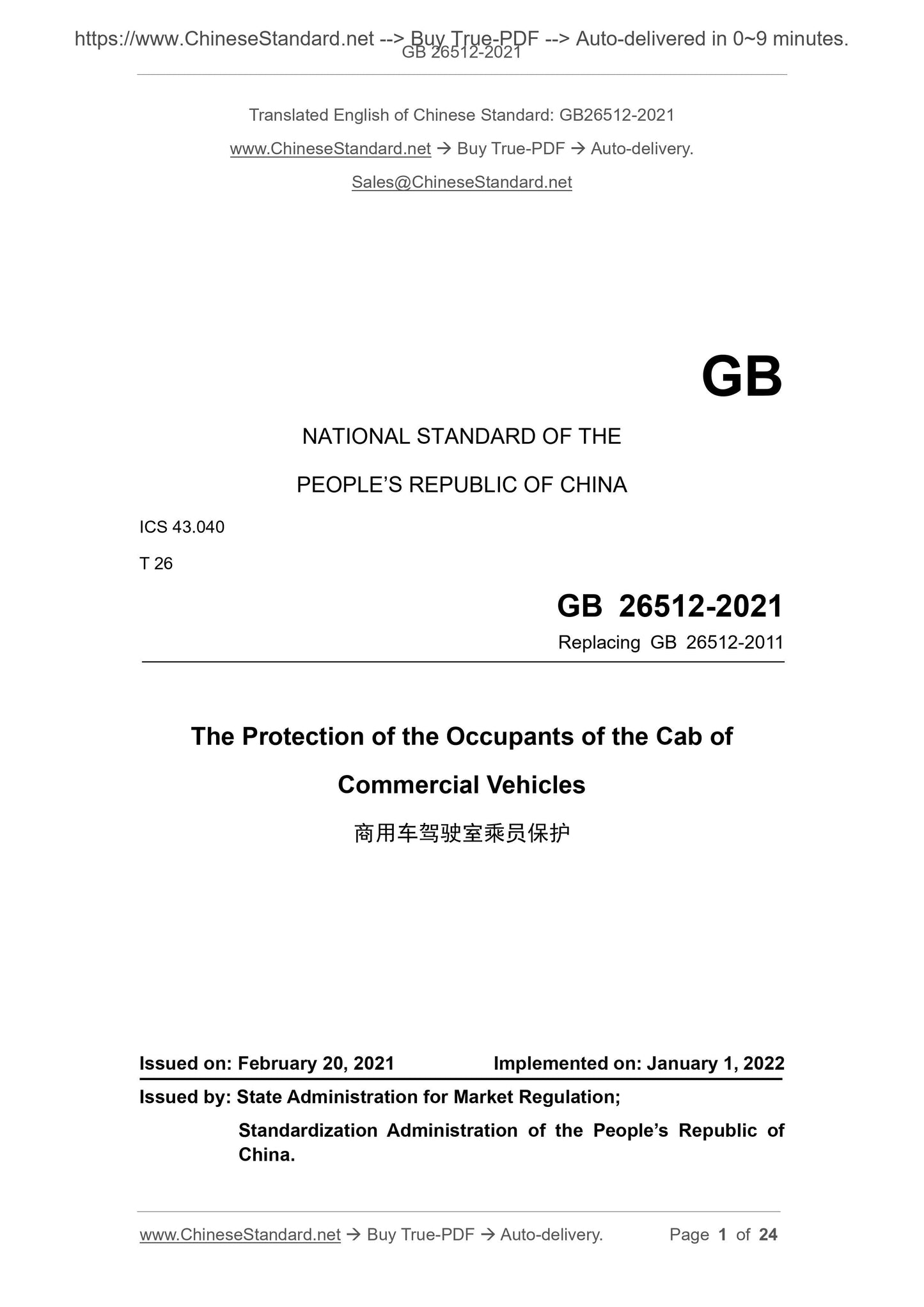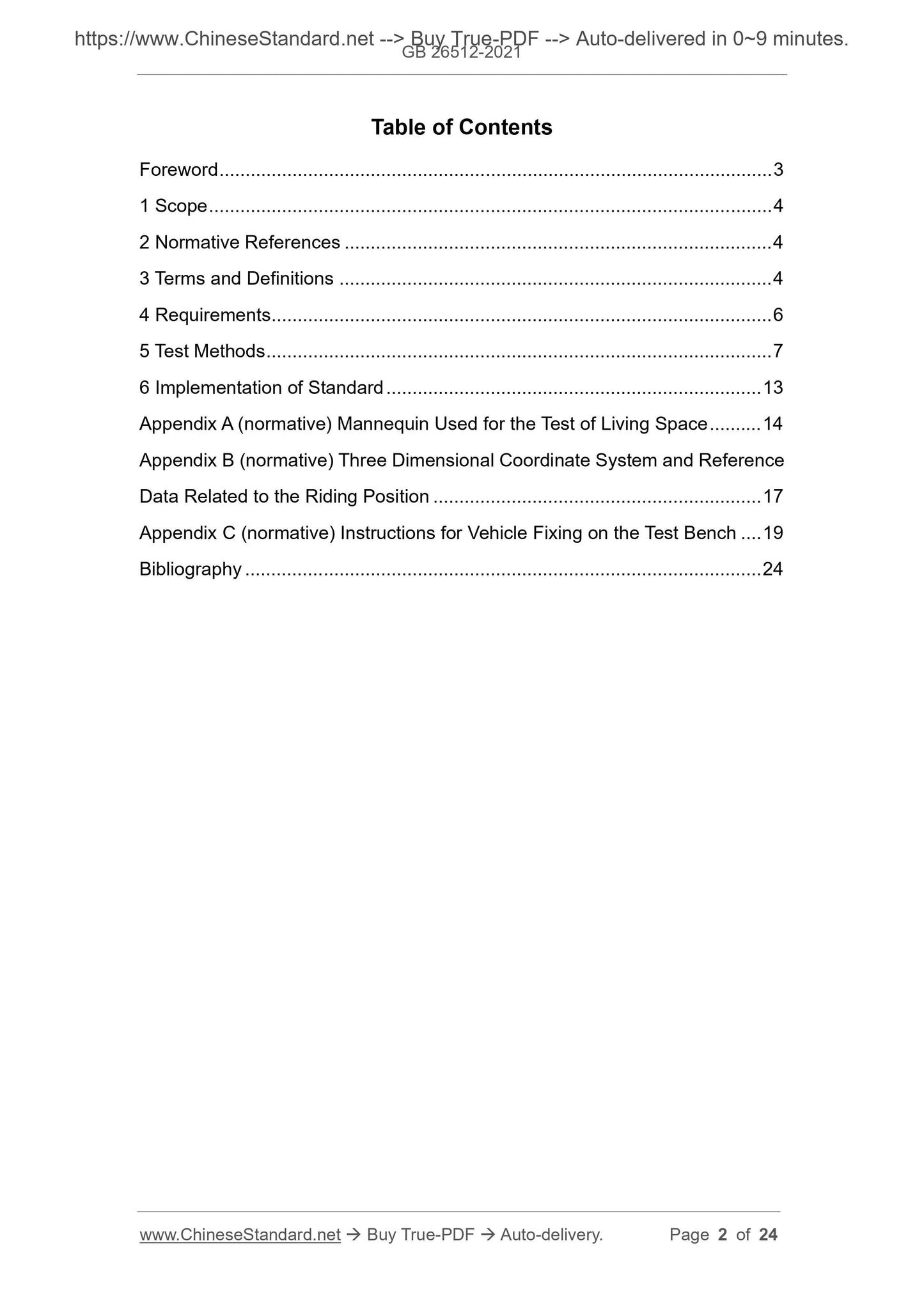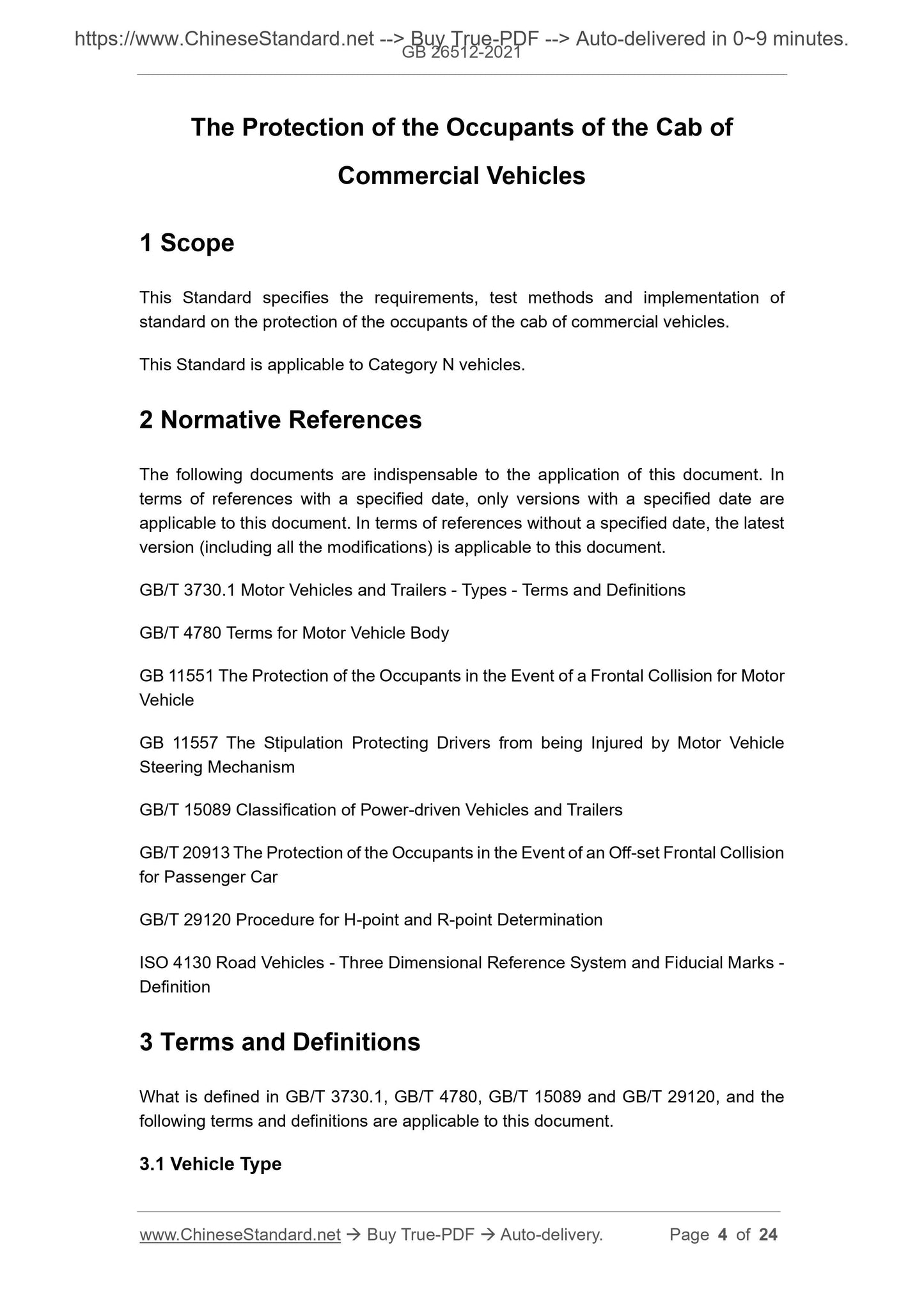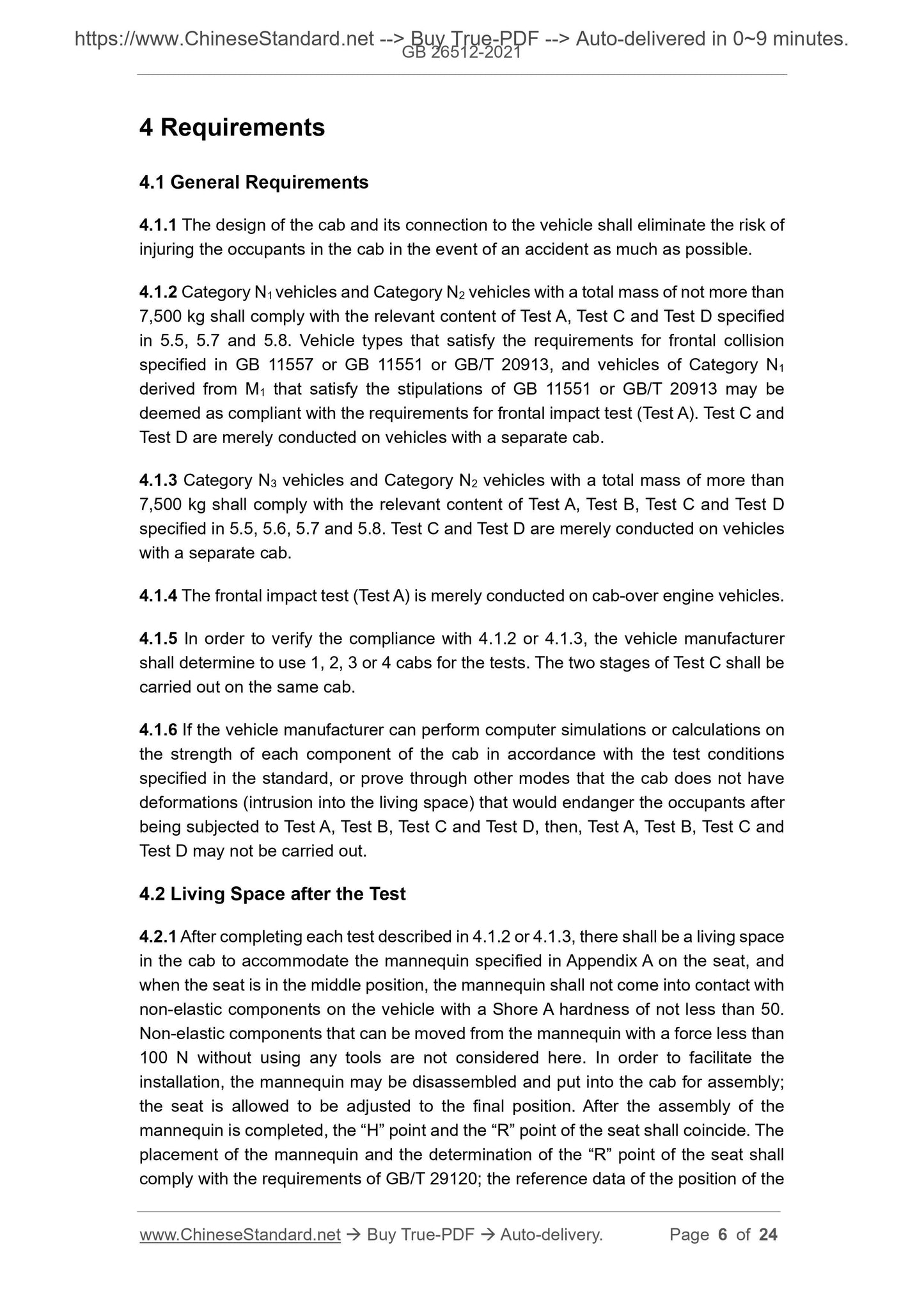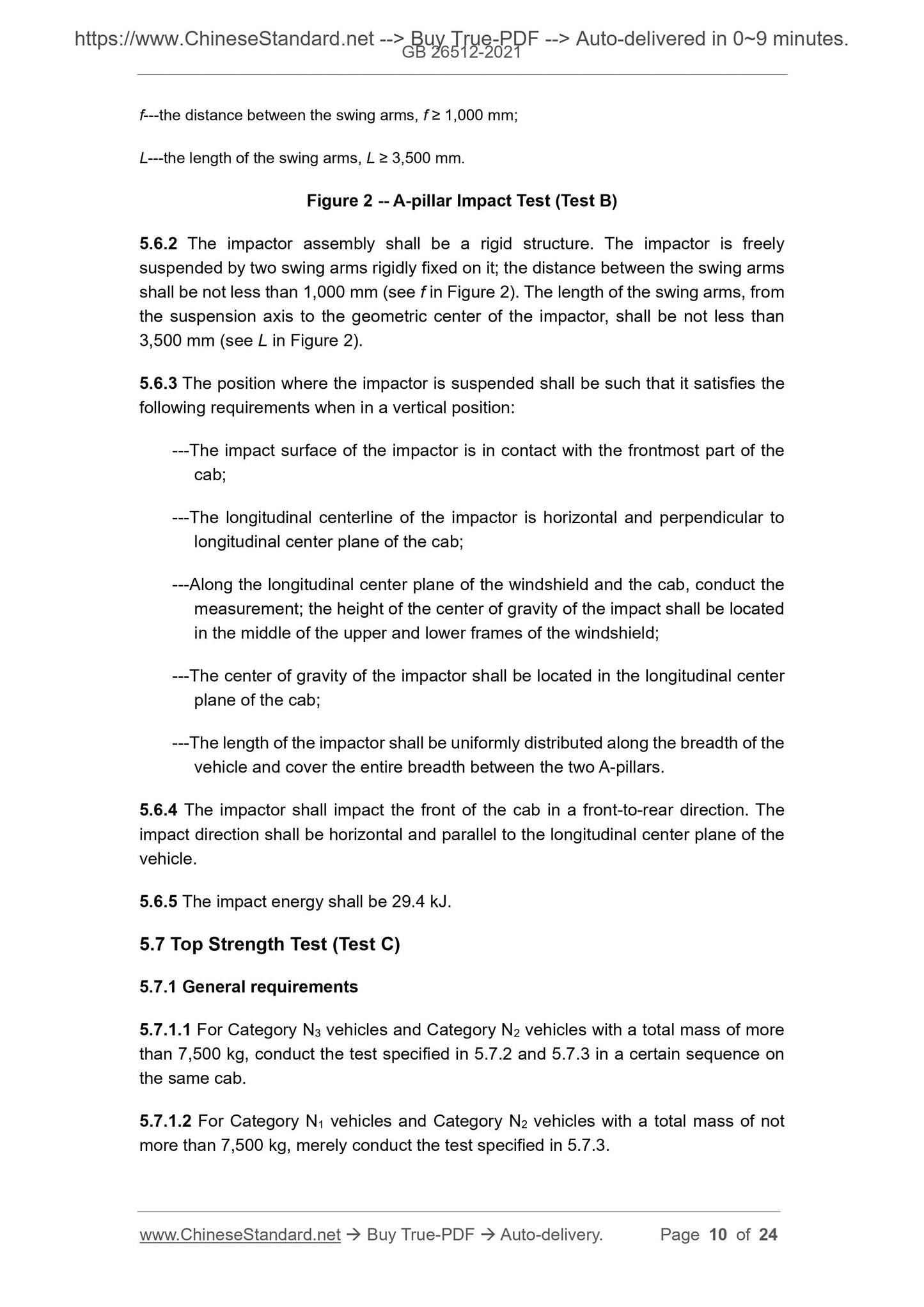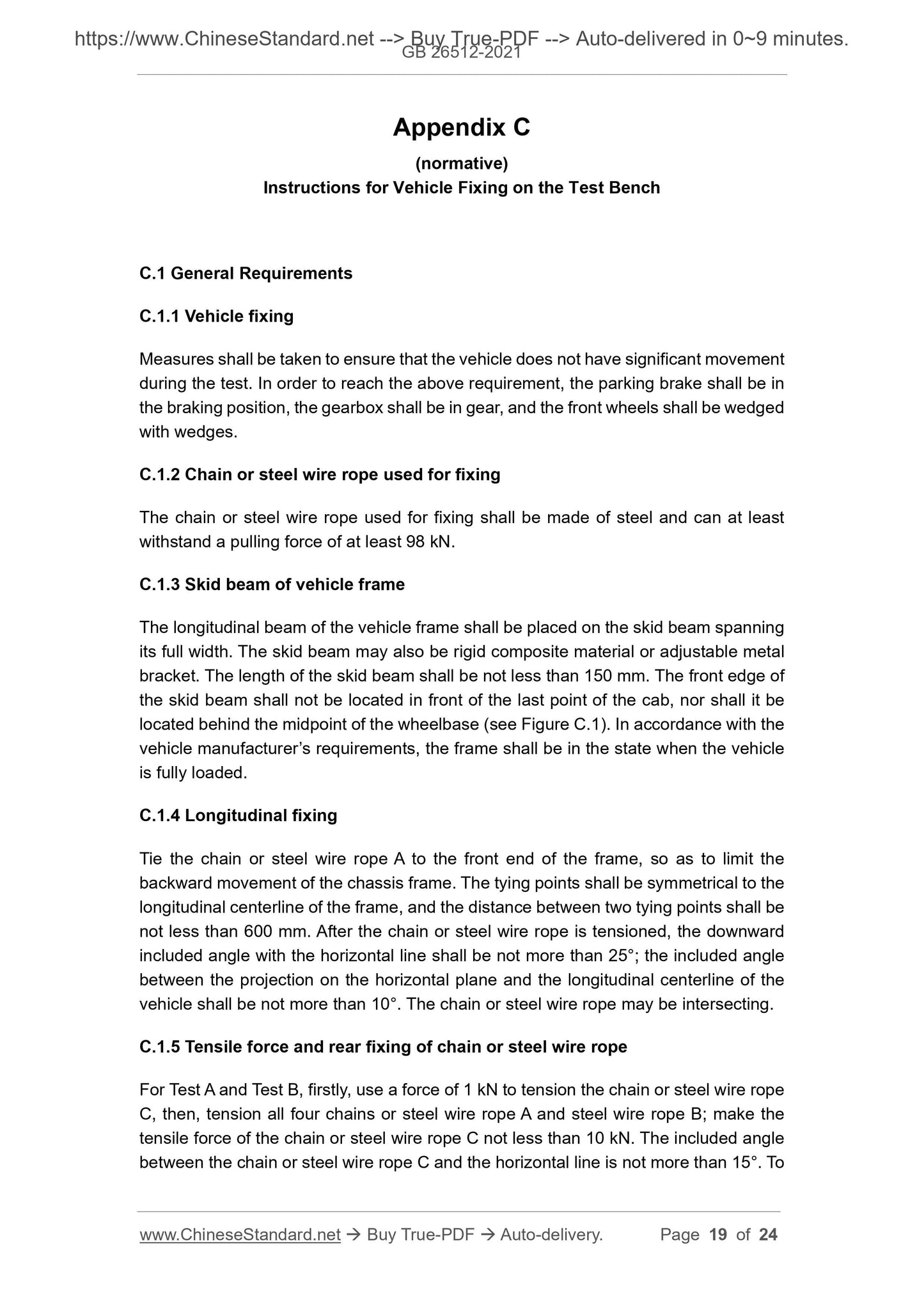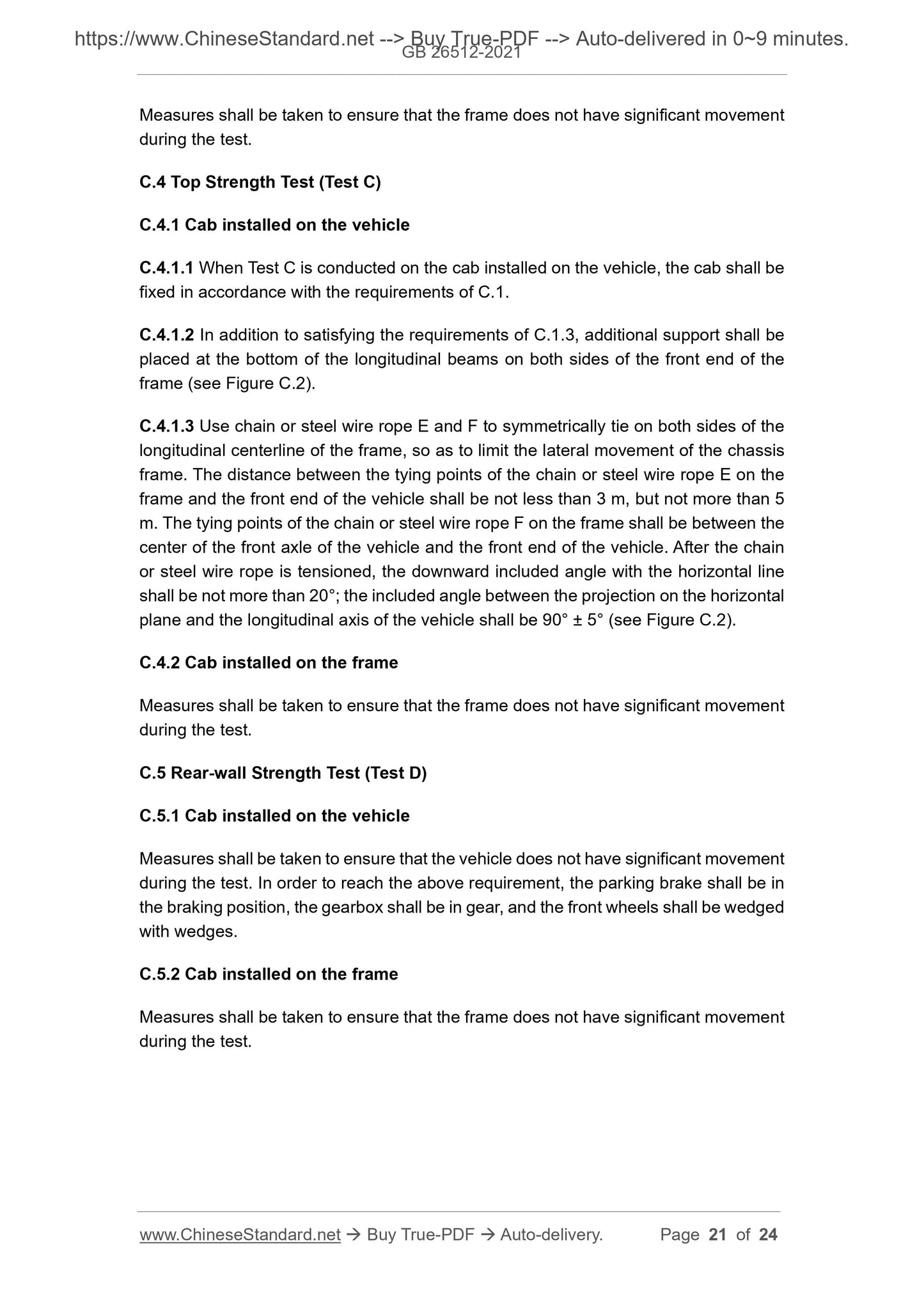1
/
of
7
www.ChineseStandard.us -- Field Test Asia Pte. Ltd.
GB 26512-2021 English PDF
GB 26512-2021 English PDF
Regular price
$245.00
Regular price
Sale price
$245.00
Unit price
/
per
Shipping calculated at checkout.
Couldn't load pickup availability
GB 26512-2021: The Protection of the Occupants of the Cab of Commercial Vehicles
Delivery: 9 seconds. Download (and Email) true-PDF + Invoice.Get Quotation: Click GB 26512-2021 (Self-service in 1-minute)
Newer / historical versions: GB 26512-2021
Preview True-PDF
Scope
This Standard specifies the requirements, test methods and implementation ofstandard on the protection of the occupants of the cab of commercial vehicles.
This Standard is applicable to Category N vehicles.
Basic Data
| Standard ID | GB 26512-2021 (GB26512-2021) |
| Description (Translated English) | The Protection of the Occupants of the Cab of Commercial Vehicles |
| Sector / Industry | National Standard |
| Classification of Chinese Standard | T26 |
| Word Count Estimation | 18,198 |
| Issuing agency(ies) | State Administration for Market Regulation, China National Standardization Administration |
Share
